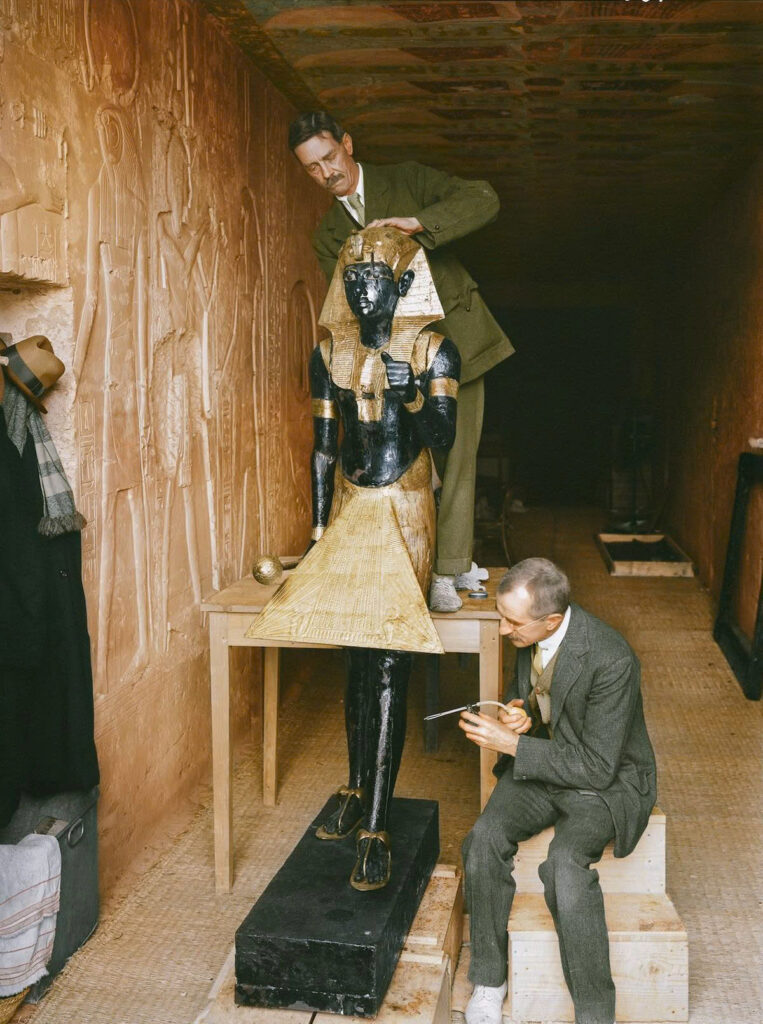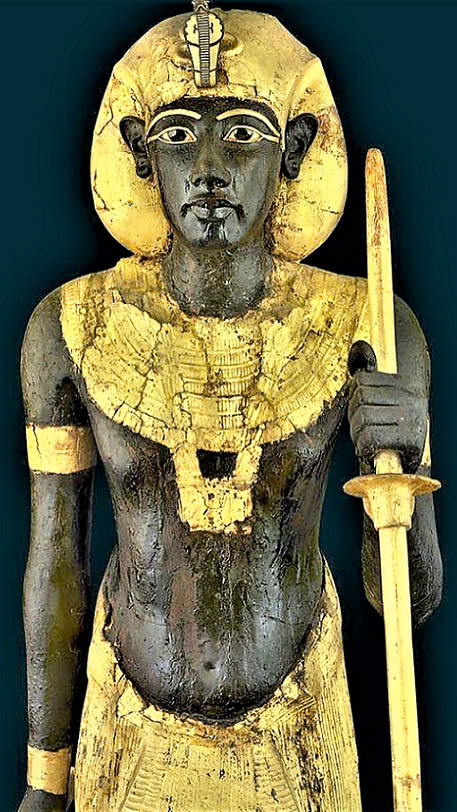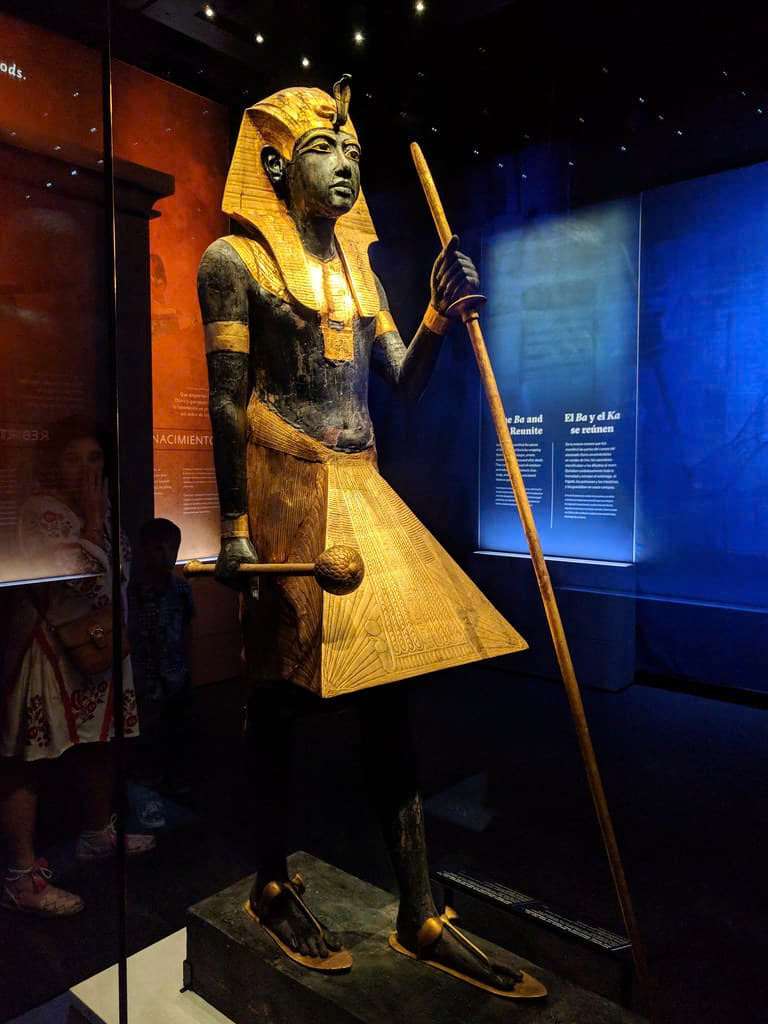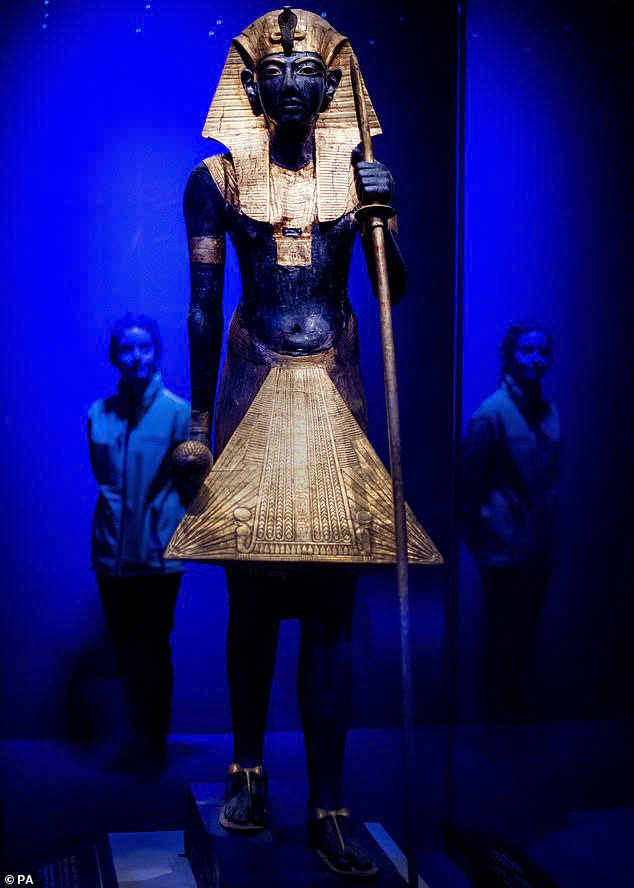The Moment of Discovery: Preserving Ancient Egyptian Treasures

In the crisp January air of 1924, a remarkable scene unfolded within the confines of a modest laboratory in the Valley of the Kings. Two dedicated archaeologists, Arthur Mace and Alfred Lucas, hunched over precious artifacts, their hands carefully working to preserve the remnants of an ancient civilization. At the center of their attention stood two sentinel statues, with one particularly striking figure depicting the young King Tutankhamun.
A Royal Portrait Frozen in Time

The statue captured Tutankhamun in all his regal splendor—wearing the iconic nemes headdress, a traditional kilt, and sandals. In his hands, he clutched a mace and staff, powerful symbols of royal authority that spoke volumes about the young king’s perceived status and potential.
The Historic Discovery of a Forgotten Pharaoh
Just two years earlier, in November 1922, British archaeologist Howard Carter had made a discovery that would change archaeological understanding forever. His team unearthed Tutankhamun’s tomb, a treasure trove that remained remarkably intact, offering an unprecedented window into the opulent world of the 18th Dynasty.
A Young King’s Legacy

Tutankhamun’s reign was brief but significant. Ascending to the throne at a tender age, he oversaw substantial changes in religious and governmental practices. The artifacts recovered from his tomb became crucial pieces of a complex historical puzzle, allowing historians to reconstruct aspects of ancient Egyptian society with unprecedented detail.
The Art of Preservation
The work of Mace and Lucas represented more than mere documentation—it was a critical mission of cultural preservation. Their meticulous efforts in this makeshift laboratory ensured that these invaluable treasures would survive for future generations to study and marvel at.
Beyond Artifacts: A Civilization Revealed

Each carefully handled statue, each preserved artifact told a story. These weren’t just objects, but windows into a sophisticated civilization that had remained largely mysterious until this groundbreaking discovery.
A Global Legacy
Today, the treasures of Tutankhamun continue to captivate audiences worldwide. Housed primarily in the Egyptian Museum in Cairo, these artifacts serve as ambassadors of an ancient culture, bridging the gap between past and present.
Continuing the Journey of Discovery
The story of King Tutankhamun is far from over. Ongoing research continues to unveil new insights, proving that some mysteries only deepen with time.
Conclusion: Preserving Humanity’s Cultural Heritage

This colorized photograph is more than a historical document—it’s a testament to human curiosity, scientific dedication, and the profound importance of understanding our shared human history. It reminds us that every artifact, every carefully preserved statue, carries within it the whispers of civilizations long past.
